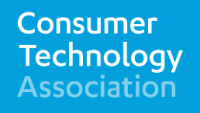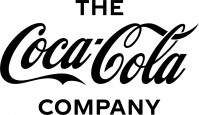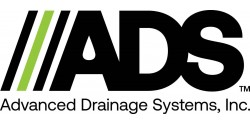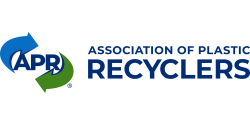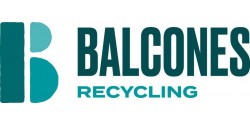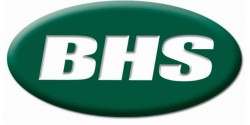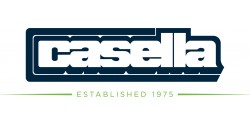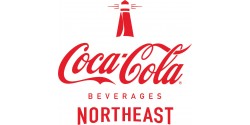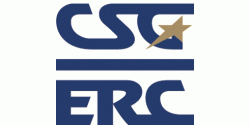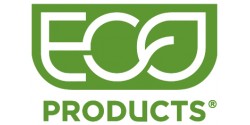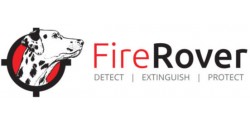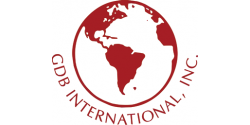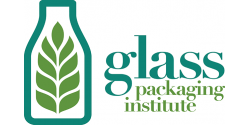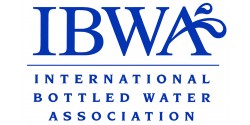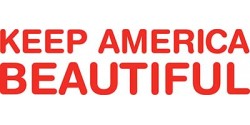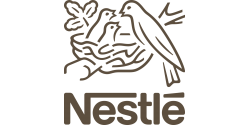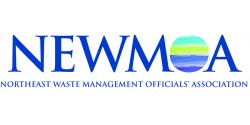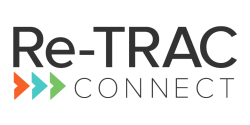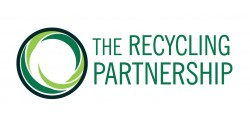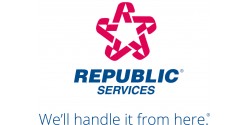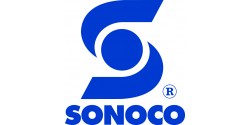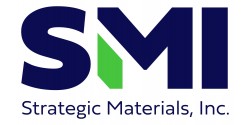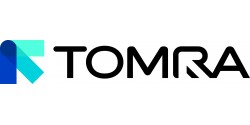March 2016
NEW & RENEWING MEMBERSHIPS
Renewing Sustaining Member
New Supporting Member
Renewing Supporting Member
Member Spotlight - Organix Solutions
NERC NEWS
- NERC’s Spring Conference to Offer Strategies for Managing Today’s Recycling Markets
- NERC Seeking Posters and/or Fliers about Why It’s Important to Recycle
- Kaley Laleker, Maryland Representative Joins NERC Board
- NERC Updates its Vision Statement
- Free Webinar - Stuck on Reuse: Resources for Making it Work – March 24
- Skiing, Eating, & Food Scraps
-
NERC’s Blog Worth Repeating—Painting Product Stewardship Success
NEWLY POSTED
- Reuse Networks in the Northeast - the former Materials Exchange listing
- Maryland Information Added to NERC Website
- NERC's Awards & Recognition: New Page Added
- Updated Solid Waste Facilities Listing
STATE UPDATES
CONNECTICUT
- New Foundation in Connecticut Aims to Boost Recycling
- CT DEEP Announces $60,000 in Grants for Municipal Recycling
- CT DEEP Releases Draft of Comprehensive Materials Management Strategy
-
Deadline Near for Proposals to Redevelop the Connecticut Waste System Project
NEW YORK
VERMONT
ADVISORY MEMBER UPDATES
- Centre County Adds Wood Scrap to Recycling Program
- UNTHA - Successfully ISO 9001-certified
- TREX Company Honored For Manufacturing ‘Greenest’ Decking
- 2016 NWRA Safety Stand Down on Backing - Recap & Results
- Important Safety-Related Deadlines Approaching for ISRI Members
- ISRI2016 Offers Two New Savings Opportunities
- NYSAR3 Announces College Grant Recipients
OF GENERAL INTEREST
NEW & RENEWING MEMBERSHIPS
Membership is key to NERC's regional and national committment to sustainable materials management. We are delighted to thank renewing Sustaining Member the Steel Recycling Institute, and to recognize new Supporting Members - Kessler Consulting and the Can Manufacturers Institute, as well as renewing Supporting Member Southeastern CT Regional Resource Recovery Authority (SCRRRA).
To see a complete listing of NERC's Members and Supporters, as well as the benefits of membership, visit the NERC Advisory Membership web page.
The broad spectrum of interests represented by NERC's Advisory Members, Individual Supporters, and Board Members and their willingness to participate significantly contribute to the unique and important role that NERC plays in recycling in the region.
For more information, contact Lynn Rubinstein, Executive Director.
Member Spotlight - Organix Solutions
Organix Solutions is on a mission. A mission to keep organics—food scraps and soiled 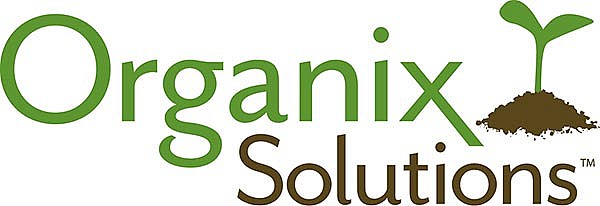 paper—out of the waste stream. The company is committed to restoring these resources to higher value uses through composting or anaerobic digestion. To accomplish its mission, Organix Solutions builds partnerships with the public sector, businesses, communities, agriculture, haulers, compost facilities, and others to provide solutions for organics management.
paper—out of the waste stream. The company is committed to restoring these resources to higher value uses through composting or anaerobic digestion. To accomplish its mission, Organix Solutions builds partnerships with the public sector, businesses, communities, agriculture, haulers, compost facilities, and others to provide solutions for organics management.
Building Partners through NERC
NERC’s reputation for bringing people together was appealing to Organix Solutions. States the company’s CEO, Jim Wollschlager, “joining NERC meant a partnering opportunity for us. Through NERC we could network with businesses, state, regional, and local governments, nonprofit organizations, and others from around the Northeast and discuss potential solutions for organics, a growing issue in the region.” He added “being a Minnesota-based company we are well known in the mid-west. We want to increase our presence around the Northeast and NERC offers us an important networking opportunity and visibility.”
Promoting the Triple Bottom Line
People, planet, and profit are an important component of the Organix Solutions mission.
Organix Solutions values its employees and its partners and understands that people are at the core of its work and providing sustainable organics management solutions.
The company believes that providing solutions to divert organics from waste disposal to create valuable organics commodities benefits the planet. It knows that putting these resources to work is vital for reducing our carbon footprint by lowering harmful greenhouse gases and our reliance on fossil fuels.
And, the company has confidence that this can be done without compromising its profits as a business. According to Organix Solutions, Program & Marketing Manager, Debra Darby, “there doesn’t have to be a choice between the environment and profitability. Our programs help to reduce costs and bring in new revenue streams, benefiting our company, our employees, our partners, and our planet.”
Sustainable Solutions at Work
Organix Solutions provides consulting services for organics collection and recycling programs. Its innovative Blue Bag Organics® / Green Bag Organix™ Program allows for co-collection of source separated organics (SSO) without putting additional trucks on the road. Program costs are reduced and communities and business districts benefit from not having additional truck traffic on the road and no additional vehicle emissions resulting from the program.
Program participants simply place their organics in a compostable bag, close the bag, and put it in with their regular garbage or recycling bin. The organic materials are co-collected with other MSW or single-stream recyclables, the bags are sorted out at a transfer station or MRF. The sorted bags are then transported to compost or anaerobic digestion facilities for processing.

The Organix Solutions compostable liner is a Biodegradable Products Institute (BPI®) certified high performance compostable can liner. The company designed and manufactures the liners to ensure that their strength and performance meets the demands of the program. According to the company, the bags are designed to hold up to the compaction in a garbage truck and that contamination due to bag failure is less than 3%.
The company works with their partners to design the SSO program, assists with phased implementation, and provides marketing and promotional tools. Ultimately, according to the company, the program brings the focus on the "opportunities to recycle" to show users that diverting organics is as easy and convenient as disposing of mixed waste.
Check out a program brochure for more information.
The company is also manufacturer of Organix AG Film, a 100% compostable agricultural mulch film. And, Organix Solutions is venturing into new technologies to address organics, including “BurCell System Technology.” This system involves a thermal decomposition process which converts pre-sorted MSW and other feedstock into a consistent, homogenous process engineered cellulosic product. The company states that the new technology is part of its “Organix Layered Approach™” for managing organics, municipal solid waste, and energy recovery.
NERC NEWS
NERC’s Spring Conference to Offer Strategies for Managing Today’s Recycling Markets
No matter where you look, you can find articles or announcements about current recycling markets. What these pieces oftentimes don’t tell you about are the different strategies that governments and businesses are using to adapt to the market changes. NERC is responding to this information need with its Spring Conference—Recycling is Not Broken: Facts vs. Fiction.
The Conference will offer sessions about the factors contributing to today’s recycling market lows and how they are different than those experienced in the past; recycling market impacts on sustainable materials management and how municipal/county government, collectors, processors, and manufacturers are currently managing materials; why we recycle and its importance to the U.S. economy and environment; strategies adopted by attendees to adapt to the market changes; and government and business perspectives on succeeding with market fluctuations.
Conference Dates: April 12 – 13
Location: Hyatt Regency Princeton, Princeton, New Jersey
Gold Sponsor
![]()
Silver Sponsors
![]()
![]()
NERC Seeking Posters and/or Fliers about Why It’s Important to Recycle
As part of the Spring Conference — Recycling Is Not Broken: Facts vs. Fiction — NERC will be displaying examples of posters and/or fliers that illustrate the reasons why we recycle. If your organization, agency, office, or business has developed resources to educate the public about why we recycle, please contact Mary Ann Remolador, NERC’s Assistant Director and Events Organizer. Thank you!
Kaley Laleker, Maryland Representative Joins NERC Board
Kaley Laleker is the Acting Deputy Director of the Land Management Administration at 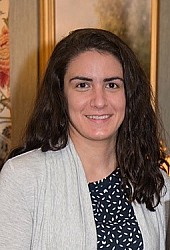 the Maryland Department of the Environment (the Department). The Land Management Administration includes the Solid Waste, Resource Management, Oil Control, Lead Poisoning Prevention, Mining, and Land Restoration Programs. Ms. Laleker formerly worked in the Resource Management Program, primarily on composting and other recycling issues, and in the Director’s Office on regulations, legislation, and other issues affecting the Land Management Administration's work. She has a J.D. from the University of Virginia School of Law and has been with the Department for 4 years.
the Maryland Department of the Environment (the Department). The Land Management Administration includes the Solid Waste, Resource Management, Oil Control, Lead Poisoning Prevention, Mining, and Land Restoration Programs. Ms. Laleker formerly worked in the Resource Management Program, primarily on composting and other recycling issues, and in the Director’s Office on regulations, legislation, and other issues affecting the Land Management Administration's work. She has a J.D. from the University of Virginia School of Law and has been with the Department for 4 years.
NERC Updates its Vision Statement
"What is NERC?" "How does it go about implementing its mission statement?"
NERC's vision statement is a critical companion to its mission statement and as such provides critical guidance to the Board and staff. After several months of discussion and deliberation, the Board has updated NERC's vision statement; last modified in April 2012.
The new statement is:
NERC seeks to fulfill its mission by:
- Identifying, acknowledging, and leveraging the strengths and resources of its member states and Advisory Members through open collaboration and information exchange.
- Providing a forum for discussion and communication of the varied interests of the member states and Advisory Members relative to materials management topics, including but not limited to: toxicity and source reduction; reuse; recycling; organics recovery including the U.S. EPA’s food recovery hierarchy ; environmentally preferable purchasing; product stewardship efforts; climate change; and natural resource conservation that supports environmental sustainability.
- Developing, nurturing, and maintaining dialogues and strategic alliances with stakeholders to advance an environmentally sustainable economy.
- Providing sustainable materials management options and strategies.
For additional information contact Lynn Rubinstein, NERC Executive Director.
Free Webinar - Stuck on Reuse: Resources for Making it Work – March 24
NERC will be offering a free reuse webinar—Stuck on Reuse: Resources for Making it Work on March 24, 1:00 – 3:00 p.m. eastern. This will be the fourth in a Reuse Webinar Series presented by NERC.
Reuse projects and programs play a significant role in addressing the needs of rural and urban communities. The webinar will showcase a variety of reuse guides, reference materials, programs, and strategies that communities may adapt to focus on their individual needs. The information to be shared on the webinar will be targeted to materials management professionals, nonprofit organizations, state/community/tribal leaders and activists, business owners, and others wanting to advance reuse in their communities.
The webinar presenters include:
- MaryEllen Etienne, CEO, Reuse Institute
- Damon Carson, Owner & President, repurposedMATERIALS
- Mary Ann Remolador, Assistant Director, Northeast Recycling Council (NERC)
Click HERE for links to PowerPoint presentations and recordings from the previous webinars in NERC’s Reuse Webinar Series—Reuse: A Triple-Bottom Line Solution, States Charging Ahead with Textiles Recovery, and Reuse: the Big Event. The Reuse Webinar Series is funded in part through a United States Department of Agriculture grant. Additional reuse resources can be found by searching for “reuse” on NERC’s website under "Resources".
For more information, contact: Mary Ann Remolador, Assistant Director, NERC, (802) 254-3636.
NERC’s Reuse Webinar Series an Ongoing Success
Reuse: A Triple-Bottom Line Solution, the third webinar in NERC’s reuse webinar series, was held on February 17.
The free webinar series, funded in part through a United States Department of Agriculture grant, has been very successful, with 180 participants. Participants have included materials management professionals, non-profit organizers, state/community/tribal leaders and activists, business owners, and others from around the country who wanted to advance reuse in their communities.
Presenters for Reuse: A Triple-Bottom Line Solution included: Diane Cohen, Executive Director, Finger Lakes ReUse, Inc.; Nancy Lo, Waste Reduction and Recycling unit, Hennepin County (MN) Environment and Energy Department; Stacey White, Sustainability Coordinator & Todd Tanner, ReUse Program Manager, University Operations, University of Minnesota; and, Colleen Hetzel, Solid Waste Principal Planner, Minnesota Pollution Control Agency.
The webinar addressed how states, communities, organizations, and companies are embracing reuse as a means for incorporating people, the planet, and economies (“profits”)—the “triple bottom line” into their everyday operations. Reuse can foster both environmental and economic sustainability. Reuse conserves resources by extending product life cycles, and it presents the world with exciting entrepreneurial business models that benefit the social good.
Click HERE for links to PowerPoint presentations and recordings from the previous webinars in NERC’s Reuse Webinar Series—Reuse: A Triple-Bottom Line Solution, States Charging Ahead with Textiles Recovery, and Reuse: the Big Event. The Reuse Webinar Series is funded in part through a United States Department of Agriculture grant. Additional reuse resources can be found by searching for “reuse” on NERC’s website under "Resources".
For more information, contact Athena Lee Bradley, Projects Manager, NERC, (802) 254-3636.
Skiing, Eating, & Food Scraps
Vermont is all about snow. And, the combination of snow and mountains means ski resorts are a popular destination around the state. Vermont ranks number one in the East and number three in the country for ski resorts, with more than 4.5 million visits to its resorts in 2014.
Of course ski resorts don’t just offer skiing. At Jay Peak, for example, there’s a year-round indoor waterpark, ice arena, and a championship golf course. There’s also a conference center, various accommodations (three hotels, a lodge, and numerous cottages and condominiums). Like many resorts, there are a lot of special events offered throughout the year and a kid’s summer camp, along with other summer activities. And, there are lots of places to eat and drink. At Jay Peak, there are five primary restaurants and a number of cafeterias and pubs. Millions of hungry skiers certainly generate food scraps.
In Vermont, the state’s Universal Recycling Law (Act 148), bans food scraps from landfill disposal through a phased-in timeline requiring businesses to reduce, recover, and divert food scraps to composting or anaerobic digestion. In 2014, businesses disposing of 104 or more tons of food scraps per year or about twelve 64-gallon carts per week were required to implement a food scrap diversion program. In 2015, businesses generating 52 or more tons per year, which equals roughly six to eight 64-gallon carts/week, were required to comply with the law. By this July, businesses generating 26 or more tons per year, the equivalent of about three to four carts/week will need to divert food scraps. In 2017, businesses generating 18 or more tons per year or about two carts/week will need to abide by the ban.
NERC has two projects involving working with businesses and communities to reduce, recover, and divert wasted food: Creating Healthy Communities through Food Recovery & Composting in Vermont, funded by EPA Region 1 (New England), and Implementing the Food Recovery Hierarchy In Rural Vermont Communities, funded through the United States Department of Agriculture Rural Utility Services Solid Waste Management Grant Program
Last spring, NERC and Black Dirt Farm staff met with chefs and staff from five of Jay Peak Resort’s primary restaurants and food service kitchens to provide training on diverting food scraps to Black Dirt Farm’s compost operation. Employees were trained in what’s acceptable in the program and how the new food scrap collection will work. Black Dirt Farm collects the food scraps and first feeds them to the farm’s chickens. When the chickens are done eating, the material is moved to windrows for composting or is used in worm composting beds.
The five Jay Peak restaurants are successfully diverting both pre-consumer and  post-consumer wastes. The resort is diverting around 10,000 pounds per month to composting. NERC continues to consult with Jay Peak through its Healthy Communities project, and is working with resort staff to design signage and containers to be used for collecting food scraps from the resort’s cafeterias and public spaces starting in the spring.
post-consumer wastes. The resort is diverting around 10,000 pounds per month to composting. NERC continues to consult with Jay Peak through its Healthy Communities project, and is working with resort staff to design signage and containers to be used for collecting food scraps from the resort’s cafeterias and public spaces starting in the spring.
NERC’s Food Recovery Hierarchy project, which started last October, involves working with three regions in Vermont—Bennington, Londonderry, and the Northeast Kingdom. In Londonderry, NERC staff is working with Bromley Resort to divert its post-consumer food scraps to composting. The resort already diverts virtually all of its pre-consumer food scraps to local farms.
For more information contact Athena Lee Bradley, NERC Project Manager.
NERC’s Blog Worth Repeating—Painting Product Stewardship Success
Paint is a wonderful thing! It’s practical, as it protects both exterior and interior walls of buildings. And it’s great for adding color and flair to our living, work, and other spaces we frequent. Paint & Coatings Industry (PCI) Magazine recently reported, “U.S. demand for coatings is forecast to rise 4.2 percent annually to 1.5 billion gallons in 2017, valued at  $30.6 billion.”
$30.6 billion.”
As a home owner I inherited a number of partially full paint cans, none of which of course were labeled. I’ve also put a little splash of color of my own around the place…there's the red, purple, and white room, and the lavender and lilac room, for example. The painters were slightly mortified; but I think the rooms are awesome. I also did the responsible thing: I labeled the cans and filed the paint swatches, so I have a record for any future needs.
Fortunately, for those old, unidentified paint cans I may never use, Vermont passed legislation providing for paint product stewardship through the PaintCare program. Around the nation, it’s estimated that about 10 percent of the house paint purchased each year is ultimately discarded.
PaintCare Inc. is a non-profit 501(c)(3) organization created by the American Coatings Association (ACA), a membership-based trade association of the paint manufacturing industry. It was established to represent paint manufacturers (paint producers) in the planning and operation of paint stewardship programs in those states that have passed paint stewardship laws.
 The first paint stewardship law was adopted in Oregon, in 2009. ACA worked with state and local government stakeholders to help develop the legislation. Paint stewardship legislation has now been passed in seven additional states: California, Colorado, Connecticut, Maine, Minnesota, Rhode Island, and Vermont, as well as the District of Columbia.
The first paint stewardship law was adopted in Oregon, in 2009. ACA worked with state and local government stakeholders to help develop the legislation. Paint stewardship legislation has now been passed in seven additional states: California, Colorado, Connecticut, Maine, Minnesota, Rhode Island, and Vermont, as well as the District of Columbia.
The program provides residents in participating states with locations where they can drop off leftover paint at no cost. Most PaintCare locations are at paint retailers who volunteer to take back paint. Since retailers accept paint during regular business hours, the public has access to convenient paint recycling and disposal.
According to the program’s website, the paint manufacturing industry lent its support to product stewardship legislation, because “these laws enable the paint industry to implement a collection program by providing a level playing field among manufacturers and retailers.”
How the program works
Paint stewardship legislation allows for a sustainable financing system for the programs. The program is funded through fees on each container of architectural paint sold in states with paint stewardship programs. Budgets and fees are set on a state-by-state basis. According to PaintCare, these fees are currently the same in each participating state: 35 cents, 75 cents or $1.60 per container, depending on the container size. Also, of significance for paint producers and retailers, the laws contain an anti-trust exemption for paint collection and processing activities.
PaintCare sites accept house paint and primers, stains, sealers, and clear coatings (e.g., shellac and varnish). The sites do not accept aerosols (spray cans), solvents, and products intended for industrial or non-architectural use. Paint must be in its original container, with the original label, and the containers cannot be larger than 5 gallons in size.
What happens to the paint?
About 2% of the paint is redistributed by household hazardous waste programs and retailers that sell salvaged building materials, such as Habitat for Humanity ReStores. Latex paint that is not redistributed is usually sorted by color, filtered, and mixed or blended together, sometimes with other virgin ingredients, to make recycled-content paint. Latex paint that is unsuitable for re-blending can be an additive in other products, or dried and made into landscaping material. Oil-based paint is generally sent to a cement kiln (plants that manufacture cement) for energy recovery, because cement kilns use a lot of fuel.
PaintCare also has handy tips for “painting smarter.”
The benefits of paint product stewardship
The Product Stewardship Institute (PSI) recently released a report on its evaluation of the California paint stewardship program. PSI also assessed how paint stewardship relates to existing local government-run programs that collect household hazardous waste (HHW) from residents.
The reports highlight how the industry-run PaintCare stewardship program benefits retailers, residents, contractors, local governments, and the environment.
According to a press release from PSI, the key takeaways from the two evaluations include:
- Retailers are highly satisfied with the PaintCare program: 85% of respondents from retail drop-off sites in California indicated that they were either satisfied or very satisfied with the state's paint stewardship program; 88% indicated that they would recommend that paint retailers in other states participate in a similar recycling program.
- Paint stewardship can save local governments money: 76% of HHW programs surveyed reported cost savings, at an average of $151,905 annually. In addition, PaintCare has covered more than $52 million in transportation and processing costs for leftover paint since 2009 - costs normally borne by local governments.
- The PaintCare program creates more convenient options for residents: Before the California PaintCare program launched in October 2012, there were 144 paint drop-off sites in the state. There are now over 733 drop-off sites, including 583 at retail locations.
The PaintCare experience presents a model for other product stewardship opportunities in this country. Stakeholders from industry, government, and nonprofit organizations came together to design a program that is successful and with clear benefits for all parties.
By Athena Lee Bradley
NEWLY POSTED
Reuse Networks in the Northeast - the former Materials Exchange listing
The reuse community is active and evolving, and one of the significant changes has been the impact on materials exchanges. For many years, NERC maintained a web page with listings of, and links to, all of the known materials exchanges serving the Northeast. A comprehensive update of that page in February 2016 revealed that many, if not most, of the exchanges no longer exist. Instead, new networks and web-based resources have emerged. In response, the page was not only updated but also renamed: Reuse Networks in the Northeast. Take a look! We're always interested in new information and corrections. To be in touch, contact Lynn Rubinstein, Executive Director, NERC.
Maryland Information Added to NERC Website
Maryland's agency and program contacts information has now been activated on the 
In addition, the State Surplus Property Program Contacts page has been updated to include Maryland.
NERC's Awards & Recognition: New Page Added
People love NERC and sometimes they let us know by giving us awards and recognition. And, we decided to share the good news with a new page on the NERC website: Awards & Recognition.
Updated Solid Waste Facilities Listing
This newly updated document provides links to state lists of public and private sector disposal and recycling facilities in the 11 Northeast states.
STATE UPDATES
CONNECTICUT
New Foundation in Connecticut Aims to Boost Recycling
Recent legislation, P.A. 14-94, called for the creation of the RecycleCT Foundation, Inc. to raise public awareness and participation in recycling. This state-chartered organization will play a key role in doubling Connecticut’s recycling rate from its current estimation of 30% to the goal of 60% by 2024.
The RecycleCT Foundation has formed a Council to develop and oversee the program. The Council is ready to begin promoting the importance of recycling and encouraging people, government entities, businesses, and organizations to adopt recycling as part of their everyday lives or operations and offering its first grant programs.
The Council recently announced its first grant awards totally over $21,000 to 12 Connecticut schools that have projects focused on recycling, waste reduction, reuse or composting and to the Connecticut Forest & Park Association for an initiative to strengthen environmental education center on sustainable materials management. Future initiatives will including a state-wide recycling marketing campaign and more grant programs to increase recycling efforts.
CT DEEP Announces $60,000 in Grants for Municipal Recycling
The Connecticut Department of Energy and Environmental Protection (CT DEEP) recently announced that seven communities were awarded more than $60,000 in grants to enhance local waste reduction, reuse, and recycling programs.
“Congratulations to these seven towns for advancing their municipal recycling systems and demonstrating a commitment to a 21st century materials management strategy. These communities are taking advantage of DEEP’s resources to further reduce the volume of trash we dispose of, conserve natural resources, and find value in our waste stream,” said DEEP Commissioner Robert Klee.
These grants are the second round of funding DEEP has provided in recent months. In August 2015, DEEP announced $45,000 in recycling grants for seven communities.
For more information and to access the Recycling Incentive Grants Request for Proposals and applications please visit www.ct.gov/deep/MuniRecyclingResources.
CT DEEP Releases Draft of Comprehensive Materials Management Strategy
DEEP has released a roadmap to achieve the state’s vision for 60 percent diversion of materials from disposal by 2024. The plan, the CT Comprehensive Material Management Strategy (CMMS), will take the place of the state’s current Solid Waste Management Plan, which was last updated in 2006.
The past decade has seen significant changes in the state’s material management system, including new recycling mandates, new product stewardship programs, and changes in the economics of waste-to-energy and recycling. The CMMS accounts for these changes, as well as recent studies of the statewide composition of Municipal Solid Waste (MSW) and Construction and Demolition Waste (C&D).
The draft strategy — set to be released for public comment through April 8, 2016 — focuses on three main objectives central to achieving the 60 percent diversion goal:
- Connecticut must improve the performance of municipal recycling systems and increase compliance with mandatory recycling provisions.
- Connecticut must develop and improve recycling and waste conversion technologies.
- Corporations that design, produce, and market products must share responsibility for stewarding those materials in an environmentally sustainable manner.
To meet these objectives, specific actions called for by the plan include increased state-led enforcement of existing recycling provisions, continuous improvements of municipal recycling programs, incentives for waste reduction, and regulatory reforms and public investment to make way for the development of new materials management infrastructure, with a focus on building “cleaner” alternatives to existing waste-to-energy facilities. The plan also seeks to align materials management planning with the state’s greenhouse gas reduction goals and clean energy priorities.
The draft of the CMMS, along with more information on how to comment, is available at www.ct.gov/deep/cmms.
Deadline Near for Proposals to Redevelop the Connecticut Waste System Project
The first phase of the Resource ReDiscovery Request for Proposals (RFP), a solicitation for developers to reshape the state’s largest waste-to-energy facility in Hartford along with other satellite facilities, is ending March 15, 2016.
The project aims to transform the existing facilities to include new technologies, consistent with the state’s effort to dramatically increase recycling and diversion of waste to 60 percent by the year 2024.
So far, the RFP has received interest from a wide range of companies, including over 50 that sent representatives to pre-bid conferences. The first phase of the RFP will result in up to three projects proceeding for further study. A final selection will be made in 2017.
The RFP is being conducted by the Department of Energy and Environmental Protection (DEEP) in partnership with the Materials Innovation and Recycling Authority (MIRA).
NEW YORK
Innovative E-Waste Recycling Program Yields Initial Success
More than 318 million pounds of e-waste recycled and diverted from landfills
DEC Acting Commissioner Basil Seggos recently released DEC’s initial E-Waste Recycling Report, detailing the implementation success of the New York State Electronic Equipment Recycling and Reuse Act, with more than 318 million pounds of e-waste collected from 2011 through 2014. The report provides an evaluation of the initial progress during 2011-2012 on implementing the Act, outlining the program’s strengths and challenges, and providing recommendations for future improvements.
“Over the first several years of implementation, New York State has successfully captured hundreds of millions of pounds of e-waste and making electronic equipment manufactures responsible for end of life costs for products covered under the Act, thereby removing this cost from municipal recycling programs,” Acting Commissioner Seggos said. “The findings in this report will help enhance and improve New York’s already strong E-Waste programs, and the progress made in this program is yet another example of Governor Cuomo’s commitment to protecting our environment.”
The inaugural report for 2011-2012 establishes the baseline data collection methods DEC has developed to establish the recycling and reuse rates in the state for covered electronic equipment (CEE). It highlights initial compliance with the program and provides recommendations for changes to enhance implementation. The report also notes the opportunities for business development that have been launched through the recycling or reuse of electronic equipment.
DEC is addressing one of the more recent implementation challenges which is the collection and recycling of Cathode Ray Tube (CRT) televisions and monitors. The Department has focused initial efforts on education of manufacturers, and this year DEC will be stepping up enforcement to ensure full compliance with the goals of the Act. DEC will continue discussions with stakeholders, municipalities, industry and recyclers to develop solutions and improvements to the program to address and improve CRT recycling. In addition, DEC continues to evaluate manufactures compliance with the Act and are drafting regulations to clarify and strengthen the provisions of the Act, and will also be providing funds to assist municipalities who have been collecting materials outside of the e-waste collection system created by the law.
The NYS Electronic Recycling and Reuse Act has proven to deliver both positive environmental and economic results in 2011 and 2012. The total amount of CEE collected by manufacturers for recycling or reuse during the 2011 reporting period (April 1, 2011 – December 31, 2011) was 44.8 million pounds, which equates to an approximate 2.3 pounds per capita statewide collection rate. During calendar year 2012, the total amount of CEE collected by manufacturers for recycling or reuse increased to 77.5 million pounds which equates to an approximate 4 pounds per capita statewide collection rate.
The significant increase in e-waste collected for recycling or reuse from NYS consumers in 2011 and in 2012 was more than in any previous year for which records are available, and that trend has continued in recent years. Data for 2013-2014 will soon be published, and will also show the collection rate of NYS consumers' e-waste has increased steadily since the Act became effective in 2011. Initial data shows the state collected 99.5 million pounds in 2013 and 96.7 million in 2014.
As of January 1, 2015 all NYS consumers are now required to recycle electronic waste, such as computers, computer peripherals, televisions, small scale servers, and small electronic equipment and are prohibited from disposing of this waste. Under the Act, free and convenient recycling programs for all consumers of the state are required to be provided by electronic equipment manufactures. Additionally, recycling diverts e-waste from landfills and combustion facilities and conserves valuable natural resources.
A copy of the report can be found on DEC’s website.
NYS's New E-waste Online Registration & Reporting System
The New York State Department of Environmental Conservation (Department) has recently launched its new E-waste Online Registration and Reporting System, using Re-TRAC Connect software, for participants in the state’s electronic waste recycling/reuse program. The online system is designed for entities required to report to NYS and replaces the previous paper submission process and must be used for all future registration and annual reporting required pursuant to the New York State Electronic Equipment Recycling and Reuse Act (Act). E-mails were sent out to all currently registered participants in the state’s electronic waste recycling/reuse program announcing the launch of the new online system. Detailed guidance and instructions for creating an online account by reporting entities and information on how to properly use the new system are available through the Department’s website.
In addition, the Department will be conducting three training webinars for reporting entities needing assistance with the new online system. Instructions for joining the training webinars are also available on the Department’s website. Separate training webinars will be conducted for Manufacturers/Collectives, Consolidation/Recycling Facilities and Collection Sites.
The Department is excited to be providing all participating entities this more convenient and environmentally sustainable method for submitting their registration and annual report forms required under the Act.
If you have any questions regarding the new online system please contact the Department at ReTRAC.Ewaste@dec.ny.gov or by calling 518-402-8706.
VERMONTVermont Battery Recycling Program Launches
The nation's first single-use battery product stewardship law makes it easier for Vermonters to recycle household batteries.
Call2Recycle, Inc., (Call2Recycle), North America’s largest consumer battery stewardship organization, and the Vermont Agency of Natural Resources announced the official launch of the statewide program for the responsible recycling of single-use (primary) batteries.
Effective January 1, 2016, Vermont’s first-in-the-nation legislation requires sin gle-use battery manufacturers to participate in a program that manages the responsible disposal of batteries sold in the state (Act 139). The legislation leads the way for a more convenient way for Vermont residents to dispose of their batteries as Vermont residents are now able to recycle all their household batteries, including AA, AAA, C, D, among other battery-types, by bringing them to drop-off locations throughout the state. The program comes at no cost to the state or to Vermont residents.
gle-use battery manufacturers to participate in a program that manages the responsible disposal of batteries sold in the state (Act 139). The legislation leads the way for a more convenient way for Vermont residents to dispose of their batteries as Vermont residents are now able to recycle all their household batteries, including AA, AAA, C, D, among other battery-types, by bringing them to drop-off locations throughout the state. The program comes at no cost to the state or to Vermont residents.
"Vermont is once again demonstrating its environmental leadership," said Agency of Natural Resources Secretary Deb Markowitz. "This program makes it easy for all Vermonters to become product stewards by dramatically increasing their rate of battery recycling. Dead batteries no longer have to be buried in a landfill or hoarded in junk drawers.”
While 70 percent of Vermonters are aware household batteries can be recycled, only 42 percent have actually recycled their batteries in the past year. In 2015, there were over 650,000 pounds of batteries sold in Vermont, but only 36,000 pounds were collected for recycling. This initiative will simplify battery recycling for Vermont residents, as they will no longer need to separate single-use batteries from rechargeable batteries. Accessibility is also an important factor, as Vermont residents will be able to bring their spent batteries to over 100 convenient drop-off sites, including retailers, municipalities, libraries, and other frequently visited locations.
The event also signaled the launch of Call2Recycle’s statewide school battery recycling challenge, a contest that seeks to increase awareness of battery recycling among students in Vermont. Andrew Sirjord, Chairman of Call2Recycle, Inc. said: “As the stewardship program approved by Vermont we are excited to continue our important work in Vermont through an expanded program. We can all contribute and help give a new life to batteries.” And he continued: “The behavior that motivates battery recycling starts at home and our youth can play a key role in this effort, which is why we are promoting initiatives such as the Vermont School Battery Recycling Challenge.”
“It’s not that often that I am presented with the opportunity to introduce a bill that is so clearly a win- win-win — a win for the environment, for the people of Vermont, and for the manufacturers of what has become an essential product in our daily lives, to demonstrate good product stewardship in action,” said Representative Tony Klein, chair of the House Natural Resources and Energy committee. “With the help of students like those here today, we can make a real difference in protecting Vermont’s environment."
A group of students from the Montpelier Main Street Middle School Green Team joined the event to present their battery recycling experience and participate as junior environmental reporters.
For more information on the school challenge, drop-off locations and battery recycling in Vermont please visit www.call2recycle.org/vermont ADVISORY MEMBER UPDATES
Centre County Adds Wood Scrap to Recycling Program
The Centre County Recycling & Refuse Authority has added wood scrap to their recycling program. Acceptable wood scrap includes clean wood/timber, untreated/unpainted wood, wood pallets, yard trim (brush), tree stumps no larger than 24” in diameter and empty cable spools at $35/ton.
For additional information about this program, please contact Amy Schirf at 814-238-7005, or by e-mail.
UNTHA - Successfully ISO 9001-certified
UNTHA shredding technology is now ISO-9001 certified. This international standard  attests to the fact that all processes in the company are constantly monitored and thus are subject to continuous improvement.
attests to the fact that all processes in the company are constantly monitored and thus are subject to continuous improvement.
Alois Kitzberger, Managing Director of UNTHA: "Thanks to this certification, we can now also outwardly show what has long been a matter of course for us internally – UNTHA stands for uncompromising reliability in shredding technology. Quality and reliability are essential cornerstones at UNTHA."
The DIN ISO 9001 quality management system is a best-practices standard for performance. This standard is internationally known and recognized and proves that all thoughts and actions in each one of the company’s sub-processes are driven by a focus on quality. Well thought out processes are crucial for product quality.
"With the ISO 9001 certification we emphasize our philosophy of using quality and reliability to achieve strong customer satisfaction. Our processes are regularly checked with reviews and audits, thereby ensuring continuous process improvement," comments Paul Gschaider who is responsible for Quality Management at UNTHA.
TREX Company Honored For Manufacturing ‘Greenest’ Decking
Trex is the Brand of Choice Among Green Builder Readers, Five Years Running
![]() Trex has done it again. And again – and again! For the fifth year in a row, the world’s leader in high-performance, low-maintenance outdoor living products has proven its industry leadership by receiving top honors from one of the industry’s most respected reader surveys – Green Builder Media’s 2016 Reader’s Choice Awards. Underscoring the brand’s leadership and preference among eco-friendly architects, builders and contractors, the publication’s readership selected Trex decking as the “greenest” in the industry.
Trex has done it again. And again – and again! For the fifth year in a row, the world’s leader in high-performance, low-maintenance outdoor living products has proven its industry leadership by receiving top honors from one of the industry’s most respected reader surveys – Green Builder Media’s 2016 Reader’s Choice Awards. Underscoring the brand’s leadership and preference among eco-friendly architects, builders and contractors, the publication’s readership selected Trex decking as the “greenest” in the industry.
“Providing eco-friendly decking and other outdoor living products is at the core of our business and values,” noted Jim Cline, president and CEO of Trex. “Being recognized as the ‘green’ leader in the industry by Green Builder once again this year confirms that our customers – both contractors and consumers – understand the importance of environmentally conscious building.”
Greenest Decking
Built on green principles and values, Trex products offer a truly environmentally responsible choice to consumers. As the largest polyethylene plastic recycler in the United States, Trex turns commercial and household plastics like newspaper sleeves and sandwich bags into eco-friendly outdoor living products. In addition, Trex salvages and keeps more than 400 million pounds of plastic and wood scrap out of landfills each year.
The entire high-performance Trex decking portfolio – including Trex Transcend®, Trex Enhance® and Trex Select® – is manufactured from more than 95 percent recycled and reclaimed materials, an achievement confirmed through the International Code Council Evaluation Service® (ICC-ES) SAVE Verification for Recycled Content. In fact, Trex was the first company in the wood-alternative decking category to receive such distinction.
Unprecedented Accolades
Green Builder Media’s 2016 Reader’s Choice Award is the latest in an impressive run for the company. In 2015, Trex was recognized with awards and honors from virtually every aspect of the building industry, including:
- Peninsula Publishing’s 2015 Brand Survey – First place in the decking category
- Builder 2015 Brand Use Study – First place in the composite decking category
- Design Journal’s ADEX Awards – Three Platinum and three Gold Awards for design excellence
- Hardware + Building Supply Dealer’s Golden Hammer Awards – First place in the decking category
- Green Builder Media – 2015 Reader’s Choice Award for Greenest Decking
- Remodeling’s 2015 Brand Use Study – First place in both the railing and decking categories
The February issue of Green Builder magazine will include comprehensive data from the 2016 Reader’s Choice Awards. Green Builder Media is the leading North American company in the residential building industry focused on green building and responsible growth. It provides information that inspires a commitment to sustainable living. For more information about Trex’s high-performance products, visit trex.com.
2016 NWRA Safety Stand Down on Backing - Recap & Results
On January 25, 2016, the National Waste & Recycling Association (NWRA) launched a 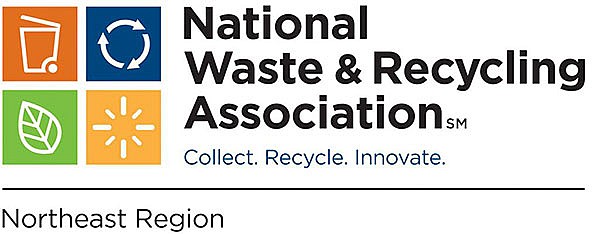 weeklong training and awareness initiative focused around reducing accidents, fatalities and injuries related to truck backing incidents that represents a common challenge for the industry. This effort proved to be a great success with more than 60 percent of the industry pledging to participate. In addition to dozens of NWRA members, NWRA was joined by several regional waste and recycling associations and the municipal waste community who encouraged their members to participate in the Stand Down: California Refuse and Recycling Council, the Oregon Refuse and Recycling Association, the Washington Refuse and Recycling Association, the International Scrap Recycling Institute and the Solid Waste Association of North America.
weeklong training and awareness initiative focused around reducing accidents, fatalities and injuries related to truck backing incidents that represents a common challenge for the industry. This effort proved to be a great success with more than 60 percent of the industry pledging to participate. In addition to dozens of NWRA members, NWRA was joined by several regional waste and recycling associations and the municipal waste community who encouraged their members to participate in the Stand Down: California Refuse and Recycling Council, the Oregon Refuse and Recycling Association, the Washington Refuse and Recycling Association, the International Scrap Recycling Institute and the Solid Waste Association of North America.
As a key element of the Association's three year strategic plan, NWRA has made safety its top priority, a pledge shared by its member companies. This Stand Down provided participating companies with the tools, guidance and support necessary to move the needle on backing incidents.
A number of participating companies shared meaningful feedback about the impact of the stand down among their employees. The Stand Down helped companies increase their focus on safety training by encouraging employee safety sessions during the week on safe backing; conducting a risk assessment and review of backing policies and procedures; and posting Stand Down information at facilities and on social media sites to make employees aware of this effort. Several participants reported identifying opportunities to update backing camera technology and lighting to improve backing safety for their workers. Daily meetings on sites nationwide provided valuable opportunities for workers to share their concerns, questions and interests in new training and resources.
Important Safety-Related Deadlines Approaching for ISRI Members
The ISRI Safety and Environmental Council (ISEC) will meet in Cleveland on May 3-5, 2016. The ISEC meeting is a member-only event for those responsible for safety and environmental issues of scrap recycling facilities.
The ISEC meetings are an opportunity for members to receive the latest safety training, exchange best practices, obtain a refresher on long-standing procedures, and discuss with colleagues new challenges all with an eye toward creating the safest work environment for employees.
The early bird registration cost is $295, through April 1. After April 1, registration is $375.
ISRI members also may now apply to join the 2016 Circle of Safety Excellence™. The Circle is a member-driven effort to promote and encourage safety in the workplace, bringing like-minded companies together to share safety data and best practices for the betterment of their own safety program and the industry in general.
Companies interested in Circle of Safety Excellence™ membership for the first time can now complete the application online, including the submission of company data. Returning members will need to reapply by entering company injury frequency data for the year 2015. All new applicants and returning members must submit their company's information no later than March 15 in order to be included in the initial benchmarking reports to be released at ISRI2016.
For more information on the ISEC meeting and the Circle of Safety Excellence™, visit ISRI.org/Safety.
ISRI2016 Offers Two New Savings Opportunities
If you missed the early bird registration deadline for ISRI2016, here is your chance to take advantage of two new savings opportunities.
First, ISRI2016 has new savings for multiple registrations. Register two people from your company at the prevailing convention registration rate and all additional registrations from your company will be processed at the early bird rate! This registration special is good until April 1 and does not apply to onsite registrations.
Second, ISRI2016 has bigger savings for larger groups. Register 10 individuals for ISRI2016 and get the next one free! This is the best group rate ISRI has ever offered. After you have registered 10 people, ISRI will rebate the cost of the 11th registration! Rebates will occur after the ISRI2016 Convention. ISRI rebates the lowest-cost attendee registration in the group.
ISRI2016 is set to be a convention like no other. In addition to a variety of workshops to help attendees better understand the changing economy, maximize profit opportunity, and build long-term success, ISRI2016 is also offering a Plastics Business and Operations Summit.
NYSAR3 Announces College Grant Recipients
Four New York colleges and universities will be receiving grants to fund innovative environmental projects as part of the recently completed round of the College Council Grant Program conducted by the New York State Association for Reduction, Reuse and Recycling (NYSAR3).
Schools receiving grants and the type of project to be funded include: SUNY Jefferson Community College sustainable textbook project; University of Rochester plan to reduce, reuse, and recycle plastic bags; Wells College residence hall in-room and in-bathroom recycling system support; and Union College composting in a new college apartment complex.
The grant program, open to College Council members, is competitive, with applications reviewed by a committee comprised of NYSAR3 members. Projects funded had to involve initiating, improving or expanding source reduction, reuse, recycling, composting, or food waste management projects on campus. Projects also needed to create awareness and interest among students, faculty, and staff, and involve an education component. Grant recipients will be providing follow-up reports that show how the grant impacted the targeted project. Grant amounts ranged from $180 to $2700.
NYSAR3 provides statewide leadership on waste reduction, reuse, and recycling issues and practices to improve New York’s environment, and serves as the primary education and training resource in the state on these issues.
The College Council provides a forum for New York’s colleges and universities to exchange information on common challenges and best practices. In addition to the grant program, members have access to a series of college-oriented environmental webinars, the opportunity to participate in regional and statewide meetings both in person and via conference call, and reduced conference registration fees, among other benefits.
For more information on the College Council and other NYSAR3 activities and programs, see the organization’s website at www.nysar3.org.
OF GENERAL INTEREST
Announcing: The Repair Association
Following a successful campaign to legalize cellphone unlocking, winning key exemptions from the Copyright Office for repair, and strong support for repair-friendly state legislation, we are excited to launch The Repair Association (repair.org)—a new organization representing professional and consumer repairers.
Expanding on work started by the Digital Right to Repair Coalition, repair.org will be a hub for repair professionals and a voice for the entire repair industry.
There are over 3 million repair and reuse professionals in the US. They fix cell phones, repair refrigerators, refurbish servers, return tractors to working order, and so much more. Their combined efforts have diverted millions of products from landfills and added countless dollars to the American economy. Repair keeps America running.
Despite their contributions, no trade group unites the repair industry as a whole. Until now. The Repair Association will fight for the interests of professional and consumer repairers—as well as providing professional development resources across repair communities.
“The repair industry is facing unique challenges,” says Kyle Wiens, CEO of iFixit, the online repair community. “Integrated electronics are making it harder to fix things. And manufacturers keep restricting access to service documentation, parts, and software—which forces consumers into more expensive ‘manufacturer-authorized’ repairs and drives small repair shops out of business.”
The Repair Association advocates nationally for a competitive repair market, as well as improvements to the quality and longevity of products.
“As software has become ubiquitous, remaking everything from cars to phones to everyday appliances, so too have legal and technical restrictions on basic users’ rights to repair, research, remake and reuse our devices,” says Corynne McSherry, Legal Director of the Electronic Frontier Foundation. “Now more than ever, we need organizations like repair.org to defend our rights.”
The Repair Association stands for access to …
- Information: Fair access to documentation and software required for repair.
- Parts and tools: Fair access to service parts and tools, including diagnostics.
- Unlocking for repair and reuse: The ability to unlock and modify software and firmware.
- Unencumbered resale: The ability to resell products (including the software needed to operate them).
- Repairable products: Design for repair and recycling principles should be integrated into product development.
Our members include:
IAMERS, iFixit, The Service Industry Association, The Electronics TakeBack Coalition, The Electronic Frontier Foundation, ASCDI, Open Technology Institute, Silicon Valley Toxics Coalition, Tradeloop, Fixit Clinic, The Fixers’ Collective, Public Knowledge, PC Rebuilders & Recyclers and many other repair businesses.
For more information about The Repair Association, contact:
Gay Gordon-Byrne
Executive Director of The Repair Association
ggbyrne@repair.org


